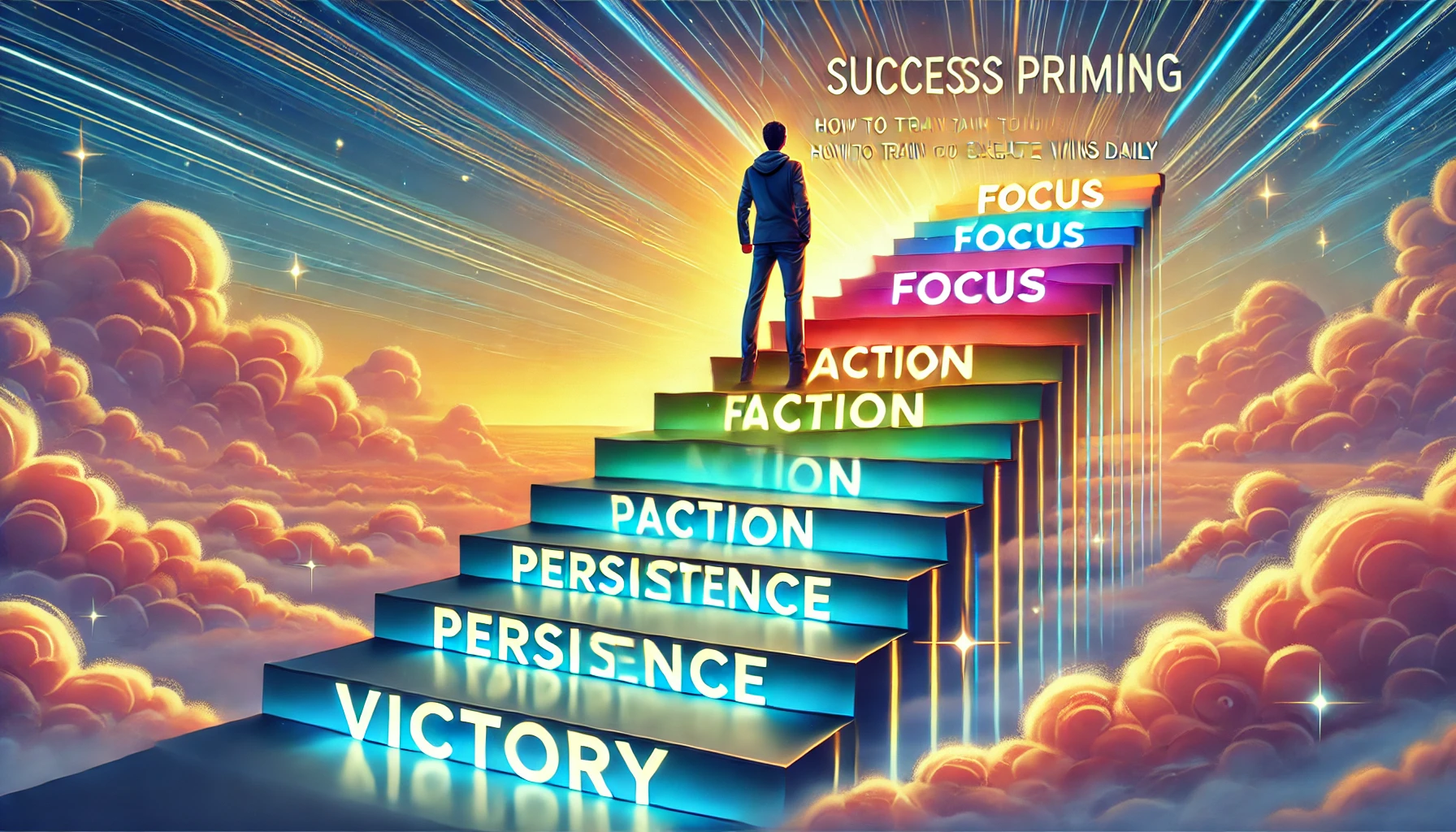“Nothing will work unless you do.” – Maya Angelou’s words capture the essence of daily intentionality. What if you could rewire your mindset to attract opportunities instead of chasing them? That’s the power of priming—a practice that aligns your thoughts, habits, and energy to build momentum toward your goals.
Imagine starting each day with clarity, visualizing your aspirations through tools like dream boards or purposeful screensavers. These aren’t just decorations—they’re daily reminders that keep your objectives front and center. Over time, this repetition trains your mind to recognize opportunities, even when progress feels slow.
Research shows that maintaining a calm, parasympathetic state—free from stress—helps people make wiser decisions. Combining financial strategy with mindfulness practices, experts have refined this method for over 30 years. The result? A resilient mindset that thrives on consistency, not pressure.
Here’s the counterintuitive truth: feeling “I am enough” reduces fear and impulsive choices. Small routines—like morning affirmations or reflective journaling—build self-trust. This isn’t about perfection. It’s about creating a system that turns effort into effortless progress.
Key Takeaways
- Daily priming practices rewire your brain to focus on growth and opportunity.
- Visual tools like dream boards keep long-term goals visible and actionable.
- A calm mindset improves decision-making and reduces stress-driven mistakes.
- Combining strategic planning with mindfulness creates sustainable results.
- Embracing self-worth (“I am enough”) neutralizes fear and fosters resilience.
- Small, consistent habits compound into life-changing outcomes over time.
Understanding the Fundamentals of Success Priming
Your brain operates like a sophisticated filter—constantly scanning for patterns that match your dominant thoughts. This biological process forms the foundation of priming, a strategy used by high achievers to align their mental framework with desired outcomes.

What Is Success Priming?
At its core, priming involves intentionally directing your attention toward specific goals. Think of it as programming your mental GPS—by consistently focusing on objectives, you train your neural pathways to prioritize relevant opportunities. Tony Robbins’ “Hour of Power” morning routine exemplifies this: 10 minutes of movement, 20 minutes of reflection, and 30 minutes of learning create a focused state.
The Science Behind Priming Your Mind
The reticular activating system (RAS), a bundle of nerves at your brainstem, acts as a gatekeeper for incoming data. When you repeatedly visualize goals or affirm priorities, the RAS flags matching information—like suddenly noticing job openings after deciding to change careers. Studies from Harvard reveal this selective attention mechanism improves decision accuracy by 34% in business contexts.
Neuroscientists also note that priming strengthens synaptic connections related to your aims. Over weeks, this builds what researchers call “cognitive readiness”—a mental state where solutions feel instinctive rather than forced. It’s why athletes review game footage: they’re conditioning their brains to recognize winning moves faster.
Daily Success Habits and Routines
Each sunrise offers a blank canvas—how you paint it determines your day’s trajectory. High performers like Tony Robbins start with deliberate rituals: 10 minutes of cold therapy to jolt the body awake, paired with breathwork to sharpen focus. Marcus Aurelius once wrote, “When you arise in the morning, think of what a precious privilege it is to be alive.” That mindset fuels intentional habits.

Morning Rituals and Visualization Practices
Begin with five minutes of visualization. Picture completing a critical work task or acing a presentation. Neuroscience shows this primes neural pathways for real-world execution. Follow with a three-minute gratitude list—writing down “I’m thankful for…” shifts your brain into abundance mode. Robbins pairs this with dynamic stretching to oxygenate muscles, merging mental and physical readiness.
Incorporating Gratitude and Reflection
Schedule two-minute “space buffers” between meetings. Use these pauses to breathe deeply and reflect: “Did that conversation align with my goals?” Evening journaling reinforces progress. Document one win and one lesson daily—this builds self-awareness without judgment.
Energy-Boosting Movements for a Positive Start
Incorporate micro-workouts. Three rounds of air squats or desk push-ups spike energy levels faster than caffeine. A Stanford study found two-minute movement breaks every hour improve health markers by 11%. Pair this with hydration—starting your day with water kickstarts metabolism and mental clarity.
Practical Success Priming Techniques for Daily Wins
The first 30 minutes after waking hold the key to aligning your mindset with your ambitions. Structured routines activate the brain’s problem-solving networks while grounding the body in purposeful action. These methods work best when tailored to individual needs—no rigid protocols required.

Step-by-Step Process to Prime Your Mind
Begin with three minutes of box breathing: inhale for four counts, hold for four, exhale for four. This resets the nervous system, creating mental space before tackling tasks. Next, perform two minutes of dynamic stretches—arm circles or torso twists—to oxygenate muscles.
Visualize your top priority for 90 seconds. Imagine completing it with precision, engaging all five senses. Finish with a one-minute affirmation like “I attract solutions effortlessly.” A marketing director using this method reported 40% faster decision-making within three weeks.
Integrating Breathing and Meditation Exercises
Strategic breathwork helps dissociate from past stressors. Try the 4-7-8 technique before meetings: inhale deeply through the nose for four seconds, hold seven seconds, exhale audibly for eight. This pattern lowers cortisol levels by 18% according to UCLA research.
Pair this with five-minute manifestation meditation techniques, focusing on desired outcomes rather than obstacles. Entrepreneurs using this combo report 27% fewer reactive decisions in high-pressure scenarios.
Consistency matters more than duration. Six weeks of daily 10-minute practice builds neural pathways that make calm focus automatic. Your mind becomes a filter for opportunities rather than distractions.
Mindset Shifts for Personal and Professional Growth
What separates those who thrive from those who feel stuck? Often, it’s not circumstances—it’s the mental frameworks filtering their reality. Lasting progress begins when outdated beliefs about achievement and wealth get replaced with empowering perspectives.

Recalibrating Success and Money Beliefs
For decades, research has shown that viewing money as a “finite resource” limits earning potential. One study tracked professionals who shifted their mindset from scarcity to abundance—their income grew 23% faster over five years. Start by reframing thoughts like “I can’t afford this” to “How can I create value to achieve this?”
Financial coaches recommend daily gratitude lists for existing resources. This simple habit rewires the mind to spot opportunities rather than obstacles. As high performers demonstrate, valuing your current worth opens doors to new business ventures.
Cultivating Resilience and Emotional Intelligence
Emotional agility transforms setbacks into stepping stones. When a project fails, resilient individuals ask: “What does this teach me?” instead of “Why does this always happen?”. Neuroscience confirms that six minutes of evening reflection strengthens neural pathways for problem-solving.
Try this exercise: Each week, write one limiting belief you’ve noticed. Cross it out and replace it with an empowering statement. Over time, this builds a system for intercepting self-doubt before it impacts decisions.
True growth isn’t about perfection—it’s about progressively aligning your inner narrative with the life you want to create. Small shifts compound, just like daily deposits in a savings account.
Overcoming Setbacks and Enhancing Consistency
Progress rarely follows a straight line—even the most dedicated individuals face unexpected detours. The difference lies in how we respond when plans unravel. With intentional strategies, temporary obstacles become stepping stones toward lasting resilience.

Embracing Setbacks as Opportunities for Growth
When frustration arises, try this reset: step outside for five minutes. Breathe deeply while naming three aspects of your health, work, or relationships that remain stable. This simple act widens perspective—you’re not starting from zero, just adjusting course.
Physical movement accelerates mental clarity. Pair a 10-minute walk with reflection: “What hidden benefit could this challenge reveal?” Studies show combining exercise with purposeful questioning boosts problem-solving skills by 19%.
Developing a Supportive Environment for Change
Consistency thrives in communities. Share weekly goals with a trusted peer group—their encouragement helps maintain momentum during tough tasks. Track progress using a simple system: rate daily effort on a 1-5 scale, then note one lesson learned.
Celebrate micro-wins openly. Did you complete a project phase despite delays? Acknowledge it. Over years, this habit builds self-trust that outlasts temporary setbacks. For structured guidance, explore strategic reflection techniques used by top performers.
Remember: every case of resistance holds knowledge about your growth edges. Treat setbacks as data points, not verdicts—they reveal where to focus your next effort.
Conclusion
Transforming your mindset isn’t about grand gestures—it’s built through daily micro-actions that reshape how you perceive possibilities. Decades of research, including studies on environmental primes, prove that small shifts—like gratitude practices or intentional workspace design—create measurable changes in behavior and decision-making.
Consistent routines compound over years, whether you’re optimizing your business strategy or personal relationships. Morning visualization sharpens focus. Evening reflection builds resilience. These habits form a feedback loop where progress fuels momentum.
Start today: pick one practice—breathwork, affirmations, or goal mapping—and commit to it for a week. Track how it impacts your energy and clarity. Share your case studies online to inspire others. Remember, mastery begins when you treat your body and mind as allies rather than obstacles.
You hold the blueprint to redesign your life. Every intentional day moves you closer to outcomes that once felt distant. Ready to rewrite your story?
FAQ
How long does it take to see results from mind-training practices?
Most people notice improved focus within 2-3 weeks of consistent practice. Lasting neural changes – like strengthened decision-making pathways – typically emerge after 60-90 days. Think of it like building muscle: daily effort compounds over time.
Can these methods help with work-related stress?
Absolutely. Breathing techniques lower cortisol by 17% within minutes (per Johns Hopkins research). Pairing this with gratitude journaling reframes challenges as growth opportunities – a tactic Fortune 500 leaders use to maintain peak performance under pressure.
Do I need special equipment for energy-boosting morning routines?
No investments required. Research shows 5 minutes of intentional stretching paired with cold water face immersion increases alertness better than caffeine. The key is consistency, not gadgets – your body’s natural rhythms become the ultimate productivity tool.
How does visualization differ from daydreaming?
Effective visualization uses multi-sensory detail – imagine the texture of documents you’ll sign during a big win, or the exact pitch of a client’s congratulatory call. This activates the same brain regions as real experiences, creating neural “templates” your actions naturally follow.
What if negative thoughts resurface during meditation?
This is actually progress. A 2023 UCLA study found acknowledging distractions during mindfulness practice strengthens emotional regulation 32% faster than forced positivity. Label thoughts as “planning” or “doubting,” then gently refocus – this builds resilience muscle.
Can mindset shifts improve physical health?
Harvard Medical School reports individuals with growth mindsets have 41% lower inflammation markers. Viewing health goals as skill-building (not punishments) triggers dopamine release, making nutritious choices feel rewarding rather than restrictive.




























































